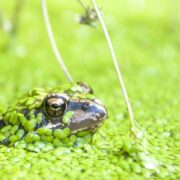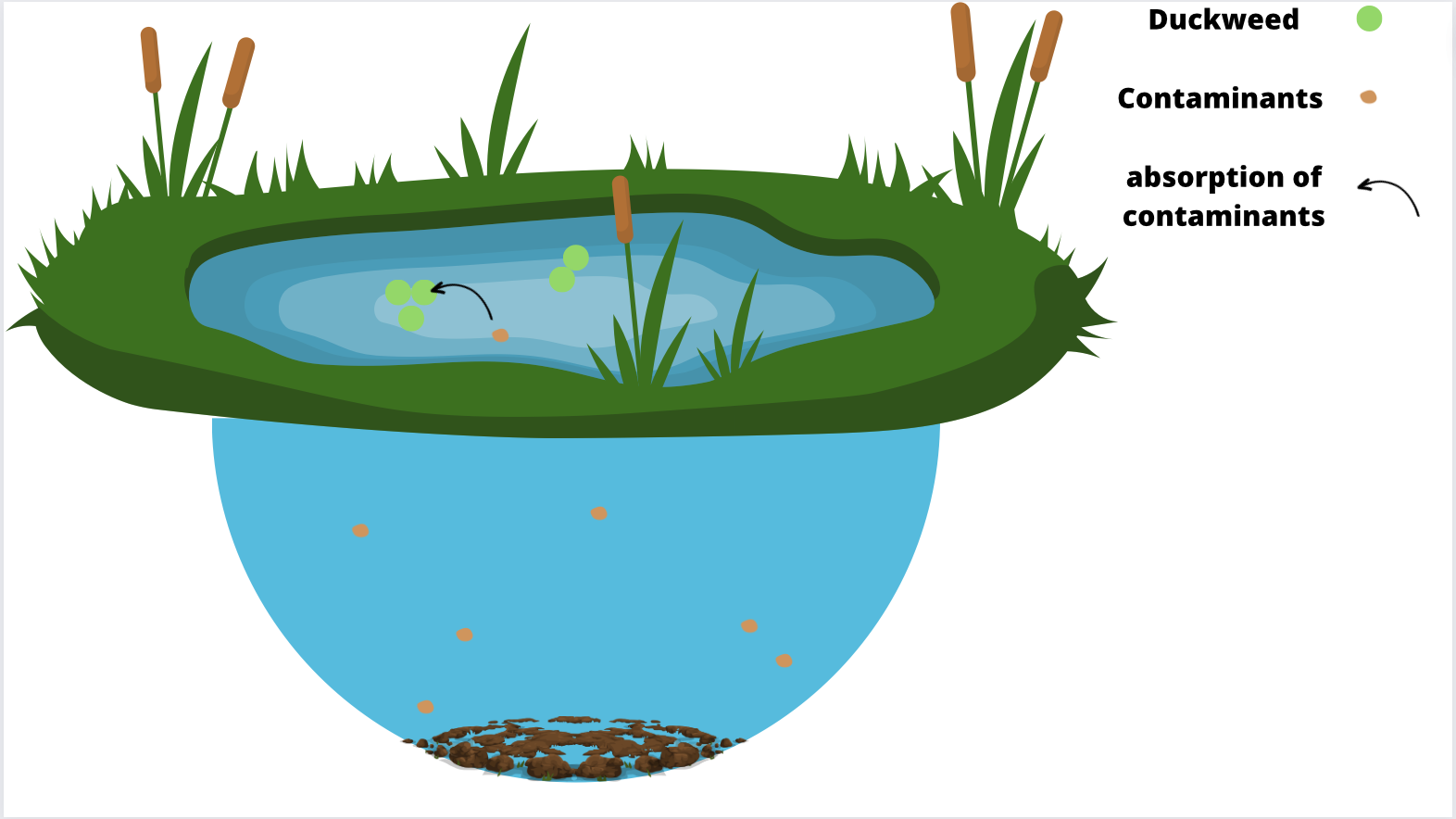DUCKWEED, A FRIEND TO PHYTOREMEDIATION
Now that you’re familiar with aquatic plants (see July 22 article), discover phytoremediation using duckweed!
Understanding the mechanism
Phytoremediation is the decontamination of an environment using plants. Specifically, for duckweed, it is the rhizofiltration technic. The ability of certain plants to absorb contaminants from the environment through their roots and retain them in their vegetative structure throughout their life.
Lemna minor, a well-studied species
Duckweeds are floating aquatic plants with small roots in contact with water. The duckweed Lemna minor is a well-studied species in phytoremediation. It is one of the most effective macrophytes observed4. Moreover, the plant’s rapid growth rate makes it ideal for phytoremediation [1].
The advantage of duckweed, including Lemna minor, is its dual capacity to absorb contaminants: through its living biomass (rhizofiltration) or through its dry biomass (biosorbent substance) [2]. The second technique is in fact a “sponge” mechanism. Dead duckweed can store contaminants passively, like a cleaning sponge in the sink. The porous aerated structure and the nature of certain molecules to attract heavy metals are the explanation. For example, the dry mass of duckweed can detoxify a diluted effluent of toxic contaminants [2].
Lemna minor’s work
The dry mass of lemna minor is used, among other things, to absorb heavy metals such as arsenic and lead, as well as cadmium, nickel, copper, mercury and zinc1. Through rhizofiltration, this plant can also store the following elements [1] :
Nutrients
Heavy metals
Organic pollutants
Agrochemicals
Pharmaceutical products
Personal products
Radioactive waste
Hydrocarbons
Dyes
Toxins
Phytoremediation offers less costly and more environmentally friendly decontamination2. Duckweed can be used to decontaminate wastewater, agricultural runoff, contaminated wetlands and water bodies6… However, an even more effective initiative would be to deal with the problem at source! Prevent rather than cure; reduce the production of anthropogenic waste to have fewer environments to decontaminate.
[1] Ekperusi, A. O., Sikoki, F. D. et Nwachukwu, E. O. (2019). Application of common duckweed (Lemna minor) in phytoremediation of chemicals in the environment: State and future perspective. Chemosphere, 223, 285‑309. https://doi.org/10.1016/j.chemosphere.2019.02.025
[2] Kaur, L. et Kanwar, N. (2021). Duckweed: a model for phytoremediation technology. The Holistic Approach to Environment, 12(1), 39‑58.
https://doi.org/10.33765/thate.12.1.4
Written by Audrey Thériault




